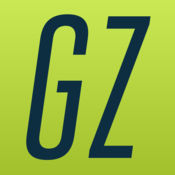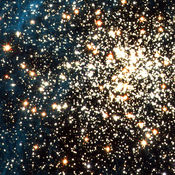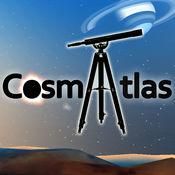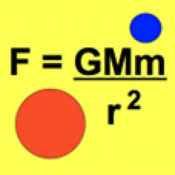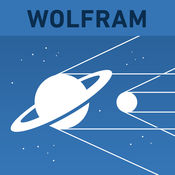-
Category Education
-
Size 0.9 MB
CosmoCalc is a simple cosmological distance calculator. With a simple and intuitive interface you can quickly set a reference cosmology and redshift, and CosmoCalc will calculate a full suite of astronomical distances and scales. CosmoCalc allows you to:* Select cosmological parameters H_0, _m, and _ with simple touch-screen controls* Easily choose from common reference cosmologies, including Planck 2013, WMAP9, Concordance, and Einstein-deSitter* Quickly determine the luminosity distance, angular diameter distance, lookback time, age of the Universe, comoving volume, and critical density* Easily switch between flat and non-flat cosmologies by clicking on the chain
CosmoCalc alternatives
Galaxy Zoo
To understand how galaxies have formed, astronomers need your help to classify them according to their shapes. If youre quick, you may even be the first person to see the galaxies youre asked to classify. To learn more about the Galaxy Zoo project and our science, visit http://www.galaxyzoo.org/Notes: The sequence of questions is determined by the Galaxy Zoo project and is consistent with the web UI.
-
size 11.1 MB
Cosmology
Explore the universe with 100s of high resolution images of planets, nebulae, galaxies, and more. Travel through space, visiting every planet and their major moons. D. at the University of California, San Diego for research in cosmology.
-
rating 4.5
-
size 111 MB
CosmAtlas
CosmAtlas is a powerful Milky Way simulator for iPhone and iPad devices, which applies real physics to calculate every single celestial body position at any time between the year 0 to year 9999.With this educational App youll be able to navigate across the astronomical distances in our cosmos, land on the major planets and satellites and see the sky from there or read about it. Main Features- More than 400 Solar System bodies, including: - The 8 major planets; -177 Solar System natural satellites; - 295 comets (including the legendary Halleys Comet); - 11 dwarf planets (including Pluto); - 3 major asteroid groups: Asteroid Belt, Kuiper Belt, Oort Cloud;- 1449 nearby bright stars;- The 88 modern constellations;- Real physics (celestial mechanics) on the objects positioning in relation of time;- See the sky from the surface of the major planets/dwarf planets, the sun and major satellites;- A few terrestrial planets and satellites will have an approximate terrain if your on the surface;- Atmospheric effects also tuned to the reality (that includes twilight sky colours).LanguagesSix languages available to maximise the educational reach:- English;- Spanish;- Portuguese;- Italian;- French;- German;
-
size 909 MB
Planet Laws - Know Your Solar System
This app demonstrates the physics of the motion of the planets around the Sun. It is a complex topic that I have made great effort to present in the simplest possible way. Also, our approach to Pluto, which is officially no longer a planet, is given in the description section for Pluto.
-
size 15.0 MB
Wolfram Astronomy Course Assistant
Do you need an astronomy tool that does more than just show you pictures? Something that will actually help you with your school work? The Wolfram Astronomy Course Assistant draws on the computational power of Wolfram|Alphas supercomputers over a 3G, 4G, or Wi-Fi connection.
-
size 15.4 MB
